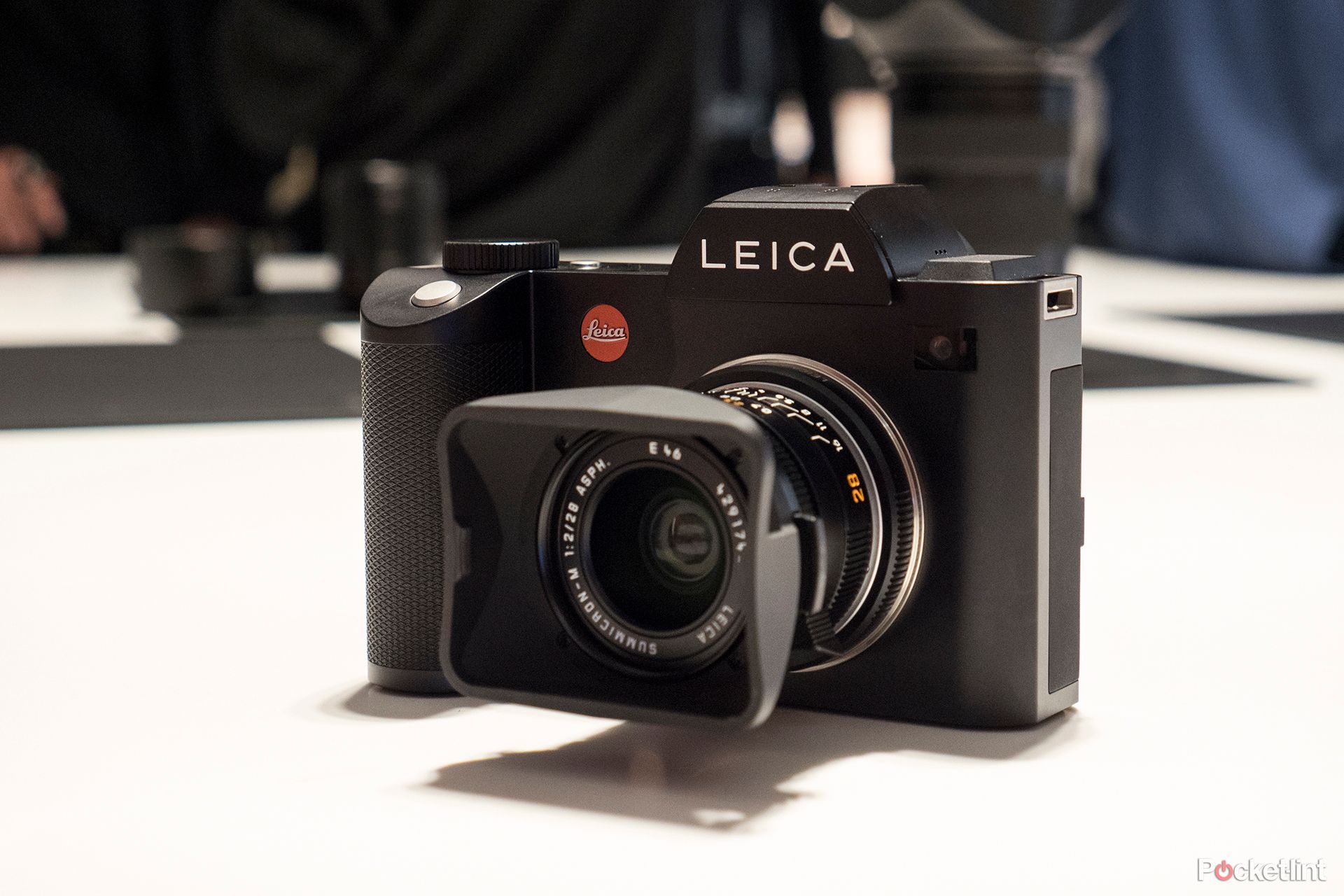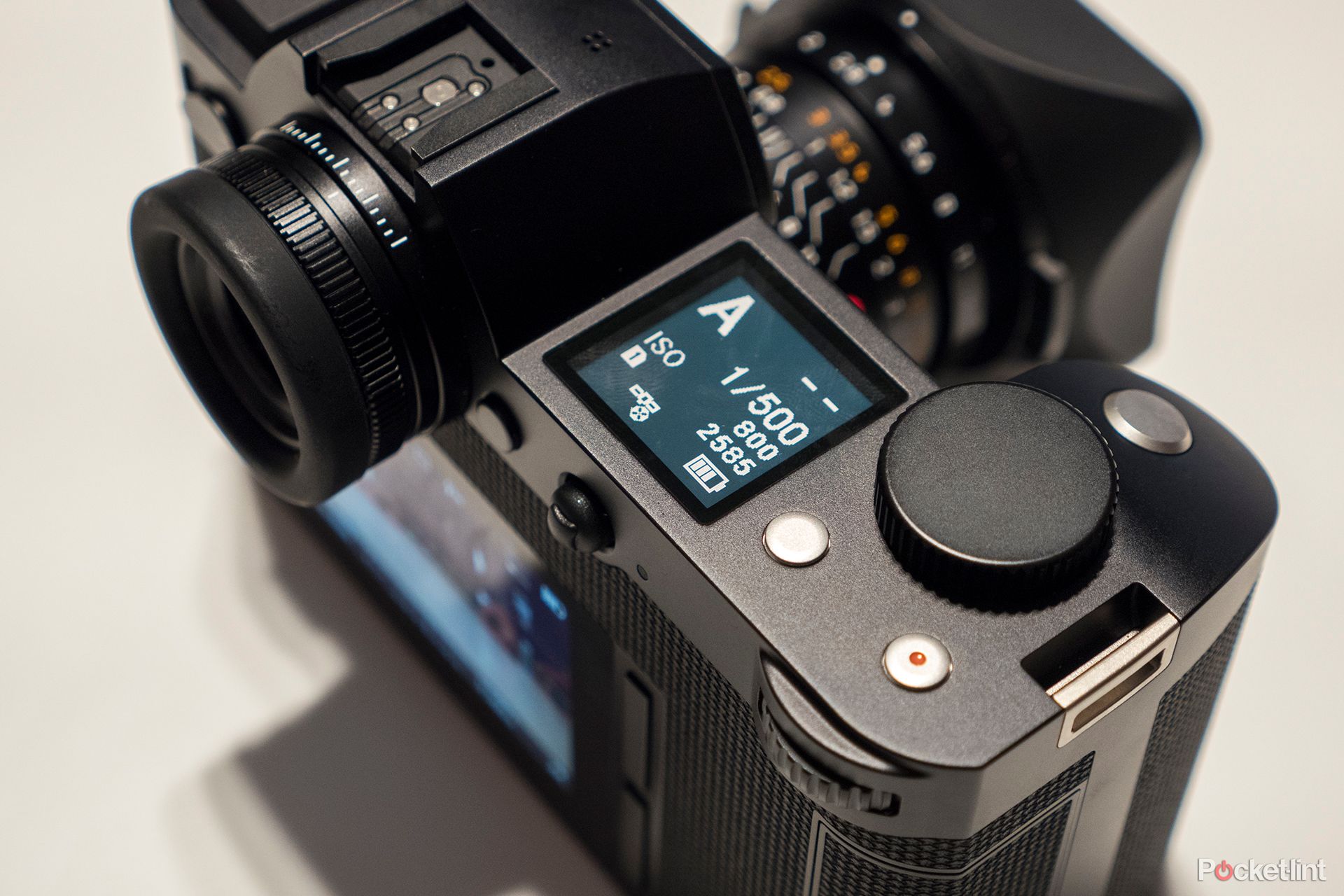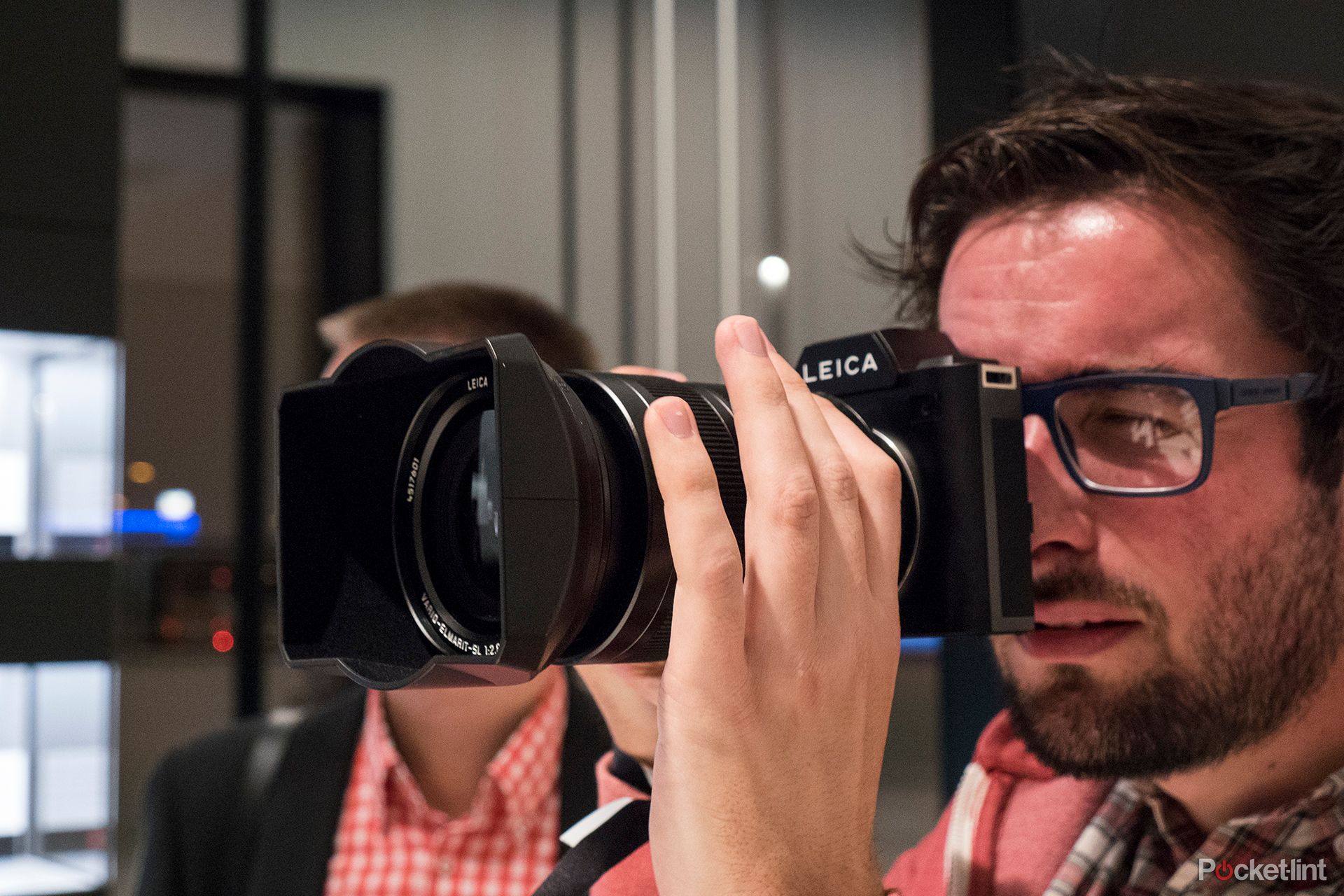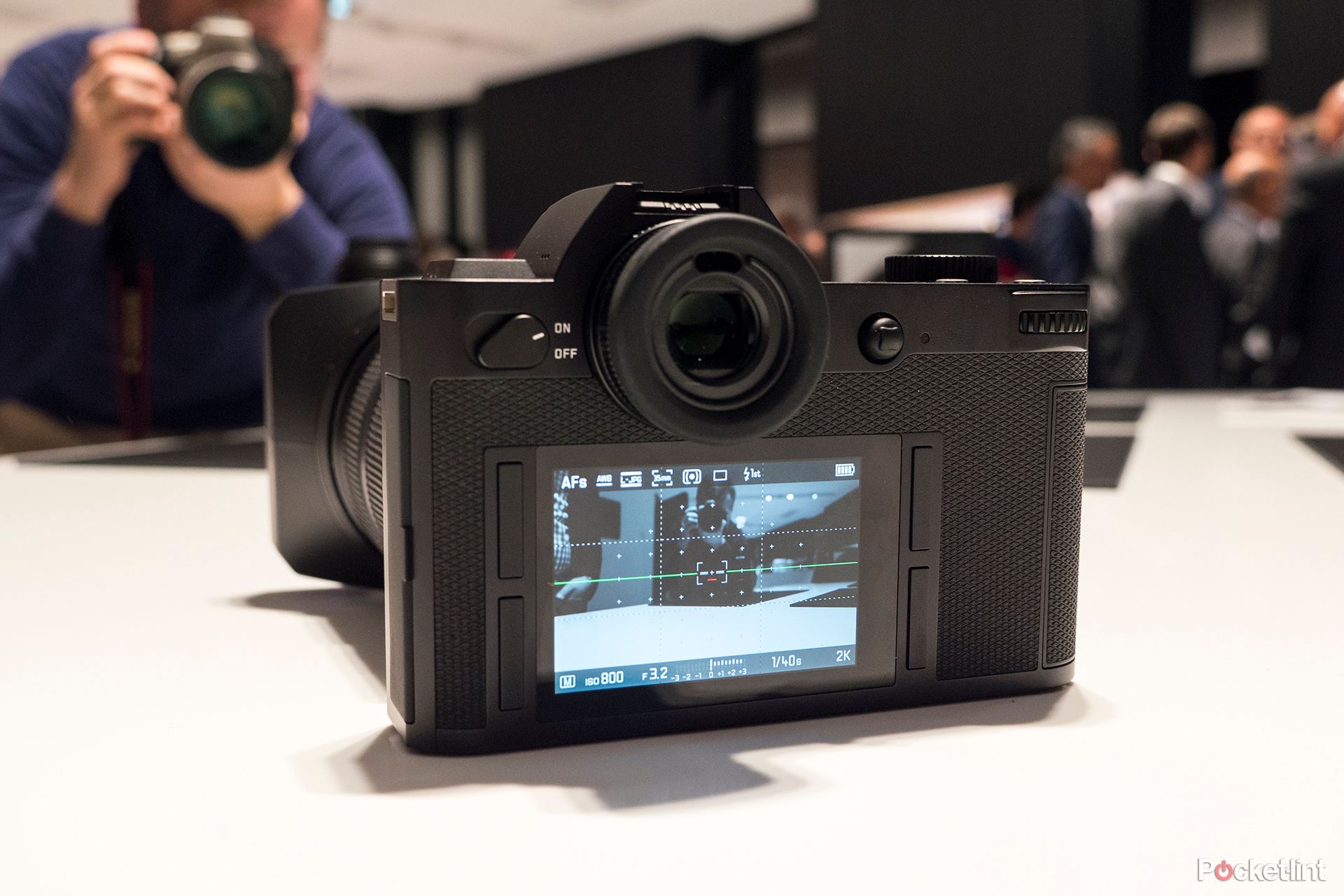All the talk about Leica's "next big thing" was fixed on an interchangeable-lens Leica Q. And that was enough hype to get us ultra excited, given how much we love that particular compact camera. Such a concept has almost occurred in the Leica SL, the company's brand new full-frame compact system camera, only at a far more significant scale.
Our quick take
So there we have it: the Leica SL is not exactly an interchangeable-lens Leica Q. Its body is big, its SL lenses are even bigger and, while there are certainly some big things on the feature front, this mirrorless camera has enough marvels as it does hurdles for us to get over. And, yep, we're still open-mouthed at the £8,200 price tag of the body plus 24-90mm combination. Yet still slightly tongue-lolling-open-mouthed because, for some curious reason, we're a little bit enamoured by the Leica SL nonetheless.

Shooting with the Leica SL
| FOR | AGAINST |
|---|---|
|
|
Because the Leica SL is a bit of a beast; it's full-frame at full scale. Not that we shy away from large cameras, but with the 24-90mm f/2.8-4 lens strapped to the front (the only SL-mount lens at launch), the SL feels unlike any other Leica. With the 28mm f/1.4 Leica M lens (via an adapter) on the front, the SL's body feels somewhat large and, therefore, the manual focus ring of the lens not particularly well placed to reach for.
That's the elephant in the room: the Leica SL is large. There's no getting around it. But get beyond the scale (and the lack of SL lenses; although T lenses will fit without an adapter), there are so many good features to be found in the Leica SL. As we said of the Q, Leica is a company realigning itself with the modern photographic world, much of which has squeezed its way into the SL's body.
First and foremost is just how responsive the SL is. It turns on via the flick of a switch to its rear upper left in little time at all; the only time it was slower was after we did a full camera reset, where we got to witness the quirky on-screen loading animation for the first time.
Speed translates well elsewhere too. The SL's autofocus system is quick, like really quick. Leica calls it the fastest autofocus of any mirrorless system camera in the world, but then we can't think of many manufacturers in that market that haven't claimed much the same. There's always a caveat, a specific lens, focal length, a particular something. With the 24-90mm strapped to the front, however, and a single autofocus area point selected using the toggle control on the back of the camera, it's a dream. Focus swept into motion in double time, highlighting our selected subject in double-quick time.
That's not all, though. With the Maestro II engine on board and a 2GB buffer ready to be filled at a moment's notice, the Leica SL can whirr off shots at a rate of 11 frames per second. We selected the high-speed burst mode (shame it's in the menus rather than simplified on a separate dial, but that's us being all too used to other mirrorless systems) and whirred off shots for what seemed like an endless period of time. There are two SD card slots (both UHS II compatible) too, which is a great touch.
If you're into video then you'll want both those card slots too. With 4K at 30fps and Cine4K at 24fps, the Leica SL certainly doesn't shy away from the moving image. Or pop it into 1080p where it's possible to shoot at up to 120fps for some luscious slow-motion in post-production. We revelled in sample footage of skateboarders, as shown during the presentation, to get a glimpse into what the SL can do. Although perhaps it's no surprise that Leica can show its hand in terms of movie-making, a whole bunch of Hollywood movies are shot using Summilux C lenses after all.
One of the most stand-out features of the SL has to be its built-in electronic viewfinder (EVF). Described by Leica as 4.4-million pixels (it's actually dots, so more like 1.1-million) it's hugely resolute, besting even the top competitor by a good 50 per cent. Add to that it's bloomin' massive with its 0.82x magnification and you get this giant all-encompassing image to the eye when shooting. The next biggest thing we've seen is the Fujifilm X-T1 with its 0.77x magnification - although between the two the scale is similar rather than drastically different. Still, hats of to Leica, this is a leading electronic viewfinder if we ever saw one.
The SL's rear screen doesn't do a bad job either, given its 2.95-inch scale and touchscreen capability (no touch in the menu selection though, for some reason). We really, really wanted it to be a tilt-angle screen (and thought that was the implication of the 170-degree mention in the press conference, but, alas, that refers to the angle of view alone). That's one area where the SL could improve, and sit alongside the competition such as the Panasonic GH4. For reasons of robust build, however, we can see why Leica remains committed to its fixed screen design.
Talking of robustness that's another key area where this Leica ticks the box. Well, certain boxes. It's a bit of a giant lug, to match is gigantic scale. Leica is one of those brands that assures refinement of a certain kind: even if it looks and feels brash, it's the darnedest best brash you'll ever handle. The same is true in the SL: it's a solid construction of aluminium, with ample buttons and dial sizes. It's not refined in the other sense of the word, perhaps, but it's elegant in its own way, albeit not exactly ergonomic at this scale.
To the rear the SL offers four elongated buttons to dig into its controls. From the menu system, to toggling in various magnification depths, they're handy, but perplexingly shaped and, again, lack ergonomic finesse.
To top it all off, there's the 24-megapixel full-frame sensor at the core of the Leica SL. Here's where we come unstuck, having not been able to take images away to get a properly good look and feel for them. But with a top ISO of 50,000, and having zoomed in on the rear LCD screen to 100 per cent (using pinch-to-zoom touch, no less), everything is looking fine and dandy. Those lenses certainly don't disappoint which, like with any Leica, is going to be one of the major selling point of this camera.
Although for the SL series lenses it's a waiting game. While the 24-90mm f/2.8-4 is out on 16 November (£3,150) alongside the camera body (£5,050), the 90-280mm f/2.8-4 (another whopper!) isn't due until Q2 2016, and the 50mm f/1.4 (described as being the new reference 50mm) won't surface until Q4 2016.



